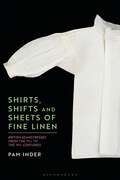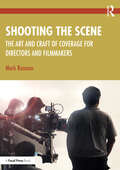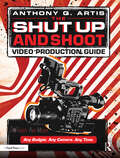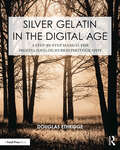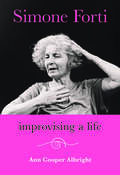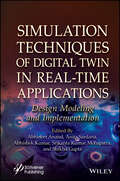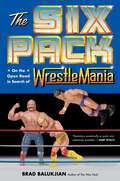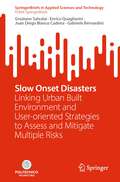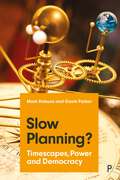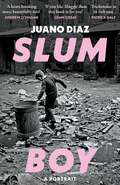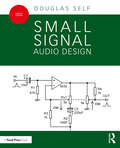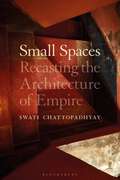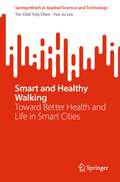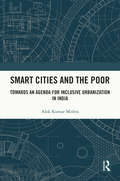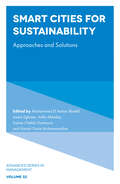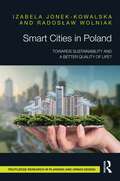- Table View
- List View
Shirts, Shifts and Sheets of Fine Linen: British Seamstresses from the 17th to the 19th centuries
by Dr Pam InderShirts, Shifts and Sheets of Fine Linen explores how the jobs of the 'seamstress' evolved in scope, and status, between 1600-1900.In the 17th and early 18th centuries, seamstressing was a trade for women who worked in linen and cotton, making men's shirts, women's chemises, underwear and baby linen; some of these seamstresses were consummate craftswomen, able to sew with stitches almost invisible to the naked eye. Few examples of their work survive, but those that do attest to their skill. However, as the ready-to-wear trade expanded in the 18th century, women who assembled these garments were also known as seamstresses, and by the 1840s, most seamstresses were outworkers for companies or entrepreneurs, paid unbelievably low rates per dozen for the garments they produced, notorious examples of downtrodden, exploited womenfolk. Drawing on a range of original and hitherto unpublished sources, including business diaries, letters and bills, Shirts, Shifts and Sheets of Fine Linen explores the seamstress's change of status in the 19th century and the reasons for it, hinting at the resurgence of the trade today given so few women today are skilled at repairing and altering clothes. Illustrated with 60 images, the book brings seamstresses into focus as real people, granting new insights into working class life in 18th- and 19th-century Britain.
Shooting the Scene: The Art and Craft of Coverage for Directors and Filmmakers
by Mark RosmanNavigating the necessary skills for shooting fiction film or TV is a challenge for any filmmaker. This book demystifies the art and craft of “coverage”—explaining where to put the camera to shoot any kind of scene.Author Mark Rosman takes readers step by step through the basics such as scene analysis, blocking actors, composition, shot listing, storyboarding, and screen direction to the more advanced, including how to shoot fights, car chases, and visual effects scenes. Rosman draws on his extensive film career to reveal the tips and tricks professional directors use to shoot creatively, quickly, and effectively on any budget and design the perfect shooting plan to make memorable and impactful film and TV. Through simple descriptions, clearly drawn diagrams, storyboard panels, and frames from famous movies, this book is a comprehensive and in-depth look at the art and craft of mastering coverage.Ideal for students of directing and film production as well as any filmmaker looking for a guide to shooting any scene.Includes two bonus online chapters covering on set procedure and how to watch your dailies.
Shooting the Scene: The Art and Craft of Coverage for Directors and Filmmakers
by Mark RosmanNavigating the necessary skills for shooting fiction film or TV is a challenge for any filmmaker. This book demystifies the art and craft of “coverage”—explaining where to put the camera to shoot any kind of scene.Author Mark Rosman takes readers step by step through the basics such as scene analysis, blocking actors, composition, shot listing, storyboarding, and screen direction to the more advanced, including how to shoot fights, car chases, and visual effects scenes. Rosman draws on his extensive film career to reveal the tips and tricks professional directors use to shoot creatively, quickly, and effectively on any budget and design the perfect shooting plan to make memorable and impactful film and TV. Through simple descriptions, clearly drawn diagrams, storyboard panels, and frames from famous movies, this book is a comprehensive and in-depth look at the art and craft of mastering coverage.Ideal for students of directing and film production as well as any filmmaker looking for a guide to shooting any scene.Includes two bonus online chapters covering on set procedure and how to watch your dailies.
The Shut Up and Shoot Video Production Guide: A Down & Dirty DV Production
by Anthony Q. ArtisAnthony Q. Artis is a 30-year veteran of the fi lm and TV industry whose features and TV shows have screened at the Tribeca Film Festival and the IFP Market, as well as on MTV and the Independent Film Channel. Anthony works professionally as a producer, director, and cinematographer at MightyAntMedia.com and has taught video production at New York University for two decades now. He is the author of the bestselling Shut Up and Shoot Documentary Guide (2014), The Shut Up and Shoot Freelance Video Guide (2011), and numerous fi lmmaking courses on LinkedInLearning.com . Accessible and comprehensive, this book is a great introduction on how to make movies and video projects with limited resources, time, or experience. Artis will teach readers the “Down and Dirty” filmmaking mindset, which forces fi lmmakers to be creative with their resources, do more with less, and result in a better, faster, and less expensive product. Drawing on more than 30 years of experience, Artis covers such wide-ranging topics as composition, lens choice, smartphone filmmaking, audio equipment, lighting and grip basics, and much more. With more than 500 full-color pictures, tips from pros, checklists, and case studies, readers will be well prepared to apply their knowledge to their shoots. Written by an indie filmmaker for indie filmmakers, this book is perfect for rookies, veterans, and students who want to maximize their budget while turning in top-quality work.
The Shut Up and Shoot Video Production Guide: A Down & Dirty DV Production
by Anthony Q. ArtisAnthony Q. Artis is a 30-year veteran of the fi lm and TV industry whose features and TV shows have screened at the Tribeca Film Festival and the IFP Market, as well as on MTV and the Independent Film Channel. Anthony works professionally as a producer, director, and cinematographer at MightyAntMedia.com and has taught video production at New York University for two decades now. He is the author of the bestselling Shut Up and Shoot Documentary Guide (2014), The Shut Up and Shoot Freelance Video Guide (2011), and numerous fi lmmaking courses on LinkedInLearning.com . Accessible and comprehensive, this book is a great introduction on how to make movies and video projects with limited resources, time, or experience. Artis will teach readers the “Down and Dirty” filmmaking mindset, which forces fi lmmakers to be creative with their resources, do more with less, and result in a better, faster, and less expensive product. Drawing on more than 30 years of experience, Artis covers such wide-ranging topics as composition, lens choice, smartphone filmmaking, audio equipment, lighting and grip basics, and much more. With more than 500 full-color pictures, tips from pros, checklists, and case studies, readers will be well prepared to apply their knowledge to their shoots. Written by an indie filmmaker for indie filmmakers, this book is perfect for rookies, veterans, and students who want to maximize their budget while turning in top-quality work.
Silver Gelatin In the Digital Age: A Step-by-Step Manual for Digital/Analog Hybrid Photography (Contemporary Practices in Alternative Process Photography)
by Douglas EthridgeThis book provides photographers of all skill levels with a concise step-by-step guide to combining analog and digital tools with the goal of making silver gelatin prints in the traditional darkroom. It offers the most comprehensive treatment of lith printing published in many years, focusing on materials which are currently available. Key topics include traditional silver gelatin printing, direct and second-pass lith printing, film to digital image conversion, bleaching, toning and other post-production practices. Readers will learn how to use specific Photoshop tools to carry out the time-honored techniques of overall tonal control, contrast, and burning and dodging. This also features Photoshop basics for black and white, image shaping in Photoshop, and digital negative creation. Through exploring these skills, readers will gain an understanding of how to prepare images and create negatives that can be used in other historical processes including cyanotype, platinum/palladium, and many others. Author Douglas Ethridge details a systematic approach to combining analog and digital working methods, making the text ideal for both digital photographers looking to creatively edit their images with traditional darkroom aesthetics, and film photographers looking to incorporate digital capabilities into their practice
Silver Gelatin In the Digital Age: A Step-by-Step Manual for Digital/Analog Hybrid Photography (Contemporary Practices in Alternative Process Photography)
by Douglas EthridgeThis book provides photographers of all skill levels with a concise step-by-step guide to combining analog and digital tools with the goal of making silver gelatin prints in the traditional darkroom. It offers the most comprehensive treatment of lith printing published in many years, focusing on materials which are currently available. Key topics include traditional silver gelatin printing, direct and second-pass lith printing, film to digital image conversion, bleaching, toning and other post-production practices. Readers will learn how to use specific Photoshop tools to carry out the time-honored techniques of overall tonal control, contrast, and burning and dodging. This also features Photoshop basics for black and white, image shaping in Photoshop, and digital negative creation. Through exploring these skills, readers will gain an understanding of how to prepare images and create negatives that can be used in other historical processes including cyanotype, platinum/palladium, and many others. Author Douglas Ethridge details a systematic approach to combining analog and digital working methods, making the text ideal for both digital photographers looking to creatively edit their images with traditional darkroom aesthetics, and film photographers looking to incorporate digital capabilities into their practice
Simone Forti: Improvising a Life
by Ann Cooper AlbrightSimone Forti, groundbreaking improvisor, has spent a lifetime weaving together the movement of her mind with the movement of her body to create a unique oeuvre situated at the intersection of dancing and art practices. Her seminal Dance Constructions from the 1960s crafted a new approach to dance composition and helped inspire the investigations of Judson Dance Theater. In the 1970s, Forti's explorations of animal movements expanded that legacy to launch improvisation as a valuable artform in its own right. From her early forays into vocal accompaniment to her News Animations, Forti has long integrated gesture and text into compelling performances that consistently stretched the boundaries of dance to layer abstract movement with story-telling and political commentary. Her "Land Portraits" series brought an immersive ecological experience to New York City stages in the 1980s, and she is a beloved teacher and mentor whose Body, Mind, World workshops have inspired dancers around the world. In this beautifully written book, author Ann Cooper Albright braids archival research, extensive interviews, and detailed movement analyses of Forti's performances to provide the first kinesthetically-informed and critically-nuanced history of Forti's multifaceted and extensive career.Publication of this book is funded by the Beatrice Fox Auerbach Foundation Fund at the Hartford Foundation for Public Giving.
Simulation Techniques of Digital Twin in Real-Time Applications: Design Modeling and Implementation
by Abhineet Anand Anita Sardana Abhishek Kumar Srikanta Kumar Mohapatra Shikha GuptaSIMULATION TECHNIQUES OF DIGITAL TWIN IN REAL-TIME APPLICATIONS The book gives a complete overview of implementing digital twin technology in real-time scenarios while emphasizing how this technology can be embedded with running technologies to solve all other issues. Divided into two parts with Part 1 focusing on simulated techniques in digital twin technology and Part 2 on real-time applications of digital twin technology, the book collects a significant number of important research articles from domain-specific experts. The book sheds light on the various techniques of digital twin technology that are implemented in various application areas. It emphasizes error findings and respective solutions before the actual event happens. Most of the features in the book are on the implementation of strategies in real-time applications. Various real-life experiences are taken to show the proper implementation of simulation technologies. The book shows how engineers of any technology can input their research ideas to convert to real scenarios by using replicas. Hence, the book has a collection of research articles from various engineers with expertise in different technologies from many regions of the world. It shows how to implement the embedded real-time data into technologies. Specifically, the chapters relate to the auto landing and cruising features in aerial vehicles, automated coal mining simulation strategy, the enhancement of workshop equipment, and implementation in power energy management for urban railways. This book also describes the coherent mechanism of digital twin technologies with deep neural networks and artificial intelligence. Audience Researchers, engineers, and students in computer science, software engineering and industrial engineering, will find this book to be very useful.
Singular Plural Ways of Staging Together: Perspectives on Contemporary Dance, Art Performance and Visual Art (TanzScripte #72)
by Iris JulianFocusing on staging processes in contemporary dance and art performance creates new opportunities to study creative participation and co-authorship. To gain these new insights, Iris Julian analyses experimental projects initiated by two groups and a single choreographer: Collect-if by Collect-if, Deufert + Plischke and Xavier Le Roy. By exploring nuances of staging work, the concept of singular plural became the analytical guideline and resulted into three research perspectives: theatre studies, sociology and ontological reading (Jean-Luc Nancy, Michaela Ott, Gerald Raunig). This approach makes it possible to look beyond the importance that is often credited to single authorship in the arts. With a foreword by Prof. Dr. Gerald Siegmund.
The Six Pack: On the Open Road in Search of Wrestlemania
by Brad BalukjianFrom the bestselling author of The Wax Pack, comes another eye‑opening road trip adventure into a pocket of iconic pop culture—professional wrestling—starring the Iron Sheik, Hulk Hogan, Tito Santana, and many more larger‑than‑life characters of the WWF in the 1980s. "Perhaps one of the most truthful and enjoyable reads about my profession ever. I absolutely loved this book." —Former WWF Champion Bret "The Hitman" Hart In 2005, Brad Balukjian left his position as a magazine fact-checker to pursue a dream job: partner with his childhood hero, The Iron Sheik (whose real name was Khosrow Vaziri), to write his biography. Things quickly went south, culminating in the Sheik threatening Balukjian&’s life. Now seventeen years later, Balukjian returns to the road in search of not only a reunion with the Sheik, but something much bigger: truth in a world built on illusion. Balukjian seeks out six of the Sheik&’s contemporaries, fellow witnesses to the World Wrestling Federation&’s (WWF) explosion in the mid-&‘80s, to unearth their true identities. As Balukjian drives 12,525 miles around the country, we revisit the heady days when these avatars of strength, villainy, and heroism first found fame and see where their journeys took them. From working out with Tony Atlas (Tony White) to visiting Hulk Hogan&’s (Terry Bollea) karaoke bar, we see where these men are now and how they have navigated the cliffs of fame.The Six Pack combines the spirit of a fan with the rigor of an investigative reporter, tracking down former WWF employees, childhood friends, and mutually curious archivists. Wrestling is perceived as a subculture without a cultural home, somewhere between sport and theater—often dismissed as silly and low‑brow. But what makes this book so compelling is the humanity beneath each wrestler. The Iron Sheik, Hulk Hogan, and the rest of the cast were not characters in a comic book movie. They were real people, with families and feelings and bodies that could break. Most of them did, in fact, break; some have been repaired, but none of them will ever be the same.
Slow Onset Disasters: Linking Urban Built Environment and User-oriented Strategies to Assess and Mitigate Multiple Risks (SpringerBriefs in Applied Sciences and Technology)
by Graziano Salvalai Enrico Quagliarini Juan Diego Blanco Cadena Gabriele BernardiniThe book provides an overview of the Slow Onset Disasters (SLOD) in the urban built environment discussing potential strategies to assess and mitigate multiple climate change related risks. Climate change evidence has been reported in the last decades, suggesting that the anthropogenic activities are accelerating these changes towards a warmer and more polluted environment. In this context, SLODs have been linked to climate change related disasters and have been stated to have a higher impact risk within dense built environment (BE). Therefore, the book presents a description of the most relevant SLODs, their significance, and confluence, the way in which scientists and entities are monitoring their progression at different scales, a structured risk assessment strategy and the deconstruction of the BE characteristics that make it more prone to SLODs risk. In addition, it highlights the necessity of adapting the traditional risk assessment methods, to account for different vulnerability types, including the morphology and materiality of the BE, and the BE users’ characteristics. In fact, individual features influence users’ responses and tolerance to environmental stressors, because of age, health, gender, habits, and behaviour, thus impacting the users’ vulnerability. Exposure can then amplify these issues, since it defines the number of users that can be effectively affected by the SLOD. Starting from this perspective, the book first traces literature-based correlations between individual features, use behaviour, and individual response to the SLOD-altered open spaces. Then, a novel methodology, to quantify the variations of users’ vulnerability and exposure, is offered, to support designers in quickly defining input scenarios for risk assessment and mitigation. Lastly, it demonstrates, through a case study, the SLOD risk assessment framework proposed and the evaluation of the efficacy of risk mitigation strategies.
Slow Planning?: Timescapes, Power and Democracy
by Mark Dobson Gavin ParkerA deep exploration on how questions of time and its organisation affect planning practice, this book questions ‘project speed’: where time to think, deliberate and plan has been squeezed. The authors demonstrate the many benefits of slow planning for the key participants, multiple interests and planning system overall.
Slow Planning?: Timescapes, Power and Democracy
by Mark Dobson Gavin ParkerA deep exploration on how questions of time and its organisation affect planning practice, this book questions ‘project speed’: where time to think, deliberate and plan has been squeezed. The authors demonstrate the many benefits of slow planning for the key participants, multiple interests and planning system overall.
Slum Boy: A Portrait
by Juano DiazOne of the most moving accounts of non fiction ever written according to the Guardian 'This is a heart-breaking story, beautifully told. I hope it finds a million readers' - Andrew O'Hagan'What a brave and powerful story. If you like Shuggie Bain and Damian Barr then Slumboy is for you' - Lemn Sissay'Compulsively readable, it's Dickensian in its rich cast of Glaswegian characters' - Patrick GaleJohn MacDonald must find his mother. Born into the slums of Glasgow in the late '70s, a 4-year-old John's life is filled with the debris of alcoholism and poverty. Soon after witnessing a drowning, his mother's addictions take over their lives, leaving him starving in their flat, awaiting her return.A concerned neighbor reports her, and he is forcibly taken away from his mother and placed into the care system. There, he dreams of being reunited with her. His mind is consumed with images and memories he can't process or understand, which his eventual adoptive parents silence out of fear as he grows into a young man within a strict Catholic and Romany Gypsy community.This memoir is about how John found his way to his true identity, Juano Diaz, and how, against all odds, his unstoppable love for his mother sets him free.
Small Signal Audio Design
by Douglas SelfSmall Signal Audio Design is a highly practical handbook providing an extensive repertoire of circuits that can be assembled to make almost any type of audio system. This fully revised fourth edition offers wholly new content on internally balanced audio design, electret microphones, emitter-follower stability, microphony in capacitors, and much, much more. This book continues the engaging prose style familiar to readers as you learn why mercury-filled cables are not a good idea, the pitfalls of plating gold on copper, and what quotes from Star Trek have to do with PCB design. Learn how to: make amplifiers with apparently impossibly low noise design discrete circuitry that can handle enormous signals with vanishingly low distortion transform the performance of low-cost opamps build active filters with very low noise and distortion while saving money on expensive capacitors make incredibly accurate volume controls make a huge variety of audio equalisers use load synthesis to make magnetic cartridge preamplifiers that have noise so low it is limited by basic physics sum, switch, clip, compress, and route audio signals build simple but ultra-low noise power supplies be confident that phase perception is not an issue. Including all the crucial theories, but with minimal mathematics, Small Signal Audio Design is the must-have companion for anyone studying, researching, or working in audio engineering and audio electronics.
Small Signal Audio Design
by Douglas SelfSmall Signal Audio Design is a highly practical handbook providing an extensive repertoire of circuits that can be assembled to make almost any type of audio system. This fully revised fourth edition offers wholly new content on internally balanced audio design, electret microphones, emitter-follower stability, microphony in capacitors, and much, much more. This book continues the engaging prose style familiar to readers as you learn why mercury-filled cables are not a good idea, the pitfalls of plating gold on copper, and what quotes from Star Trek have to do with PCB design. Learn how to: make amplifiers with apparently impossibly low noise design discrete circuitry that can handle enormous signals with vanishingly low distortion transform the performance of low-cost opamps build active filters with very low noise and distortion while saving money on expensive capacitors make incredibly accurate volume controls make a huge variety of audio equalisers use load synthesis to make magnetic cartridge preamplifiers that have noise so low it is limited by basic physics sum, switch, clip, compress, and route audio signals build simple but ultra-low noise power supplies be confident that phase perception is not an issue. Including all the crucial theories, but with minimal mathematics, Small Signal Audio Design is the must-have companion for anyone studying, researching, or working in audio engineering and audio electronics.
Small Spaces: Recasting the Architecture of Empire
by Professor Swati ChattopadhyaySmall Spaces recasts the history of the British empire by focusing on the small spaces that made the empire possible. It takes as its subject a series of small architectural spaces, objects, and landscapes and uses them to narrate the untold stories of the marginalized people-the servants, women, children, subalterns, and racialized minorities-who held up the infrastructure of empire. In so doing it opens up an important new approach to architectural history: an invitation to shift our attention from the large to the small scale. Taking the British empire in India as its primary focus, this book presents eighteen short, readable chapters to explore an array of overlooked places and spaces. From cook rooms and slave quarters to outhouses, go-downs, and medicine cupboards, each chapter reveals how and why these kinds of minor spaces are so important to understanding colonialism. With the focus of history so often on the large scale - global trade networks, vast regions, and architectures of power and domination - Small Spaces shows instead how we need to rethink this aura of magnitude so that our reading is not beholden such imperialist optics. With chapters which can be read separately as individual accounts of objects, spaces, and buildings, and introductions showing how this critical methodology can challenge the methods and theories of urban and architectural history, Small Spaces is a must-read for anyone wishing to decolonize disciplinary practices in the field of architectural, urban, and colonial history. Altogether, it provides a paradigm-breaking account of how to 'unlearn empire', whether in British India or elsewhere.
Smart and Healthy Walking: Toward Better Health and Life in Smart Cities (SpringerBriefs in Applied Sciences and Technology)
by Tin-Chih Toly Chen Yun-Ju LeeThis book examines smart technologies and their invaluable role in augmenting the walking experience of mobile users. From meticulously planned walking routes to precise footprint detection and analysis, as well as cutting-edge fall detection and prevention mechanisms, these intelligent technologies have the potential to revolutionize healthy and smart walking. Against the backdrop of the post-COVID-19 era, where unrestricted mobility has become pivotal for restoring normalcy, the demand for smart healthcare solutions has soared. The book explores latest advances in sensor technology, cloud computing, deep learning, and networking and related innovative applications that can leverage smart technologies to enhance healthy walking.
Smart Cities and the Poor: Towards an Agenda for Inclusive Urbanization in India
by Alok MishraDeveloping countries worldwide have been embarking on ‘smart cities’ programmes using new technology solutions to improve public services. Faced with severe problems of digital divide, poverty, unemployment, inequality, and financial and social exclusion, these cities have to negotiate hard in order to reach their goals. This book examines urban governance, digital divide, poverty, unemployment, and financial and social exclusion and presents a theoretical perspective on inclusive cities, urbanization, migration, slums,and affordable housing.The book aims at formulating and implementing an agenda for inclusive, equitable, and sustainable urban development in tune with the UN-SDGs, the New Urban Agenda of Habitat III, and India’s new national urban missions. It probes into the scope of adopting inclusionary urban planning, zoning, and housing, financing inclusive city development, and poverty alleviation through municipal finance reforms using findings and lessons from detailed field studies of Indian cities. It also suggests an agenda for slum-free and poverty-free cities in an attempt to make these cities more people-focused, humane, and inclusionary.This book will be of interest to scholars and researchers of political science, policy studies, public administration, urban studies, urban planning and management, urban sociology, and geography, besides being of interest to policy researchers, community workers, grass roots researchers, policymakers, and sociologists.
Smart Cities and the Poor: Towards an Agenda for Inclusive Urbanization in India
by Alok MishraDeveloping countries worldwide have been embarking on ‘smart cities’ programmes using new technology solutions to improve public services. Faced with severe problems of digital divide, poverty, unemployment, inequality, and financial and social exclusion, these cities have to negotiate hard in order to reach their goals. This book examines urban governance, digital divide, poverty, unemployment, and financial and social exclusion and presents a theoretical perspective on inclusive cities, urbanization, migration, slums,and affordable housing.The book aims at formulating and implementing an agenda for inclusive, equitable, and sustainable urban development in tune with the UN-SDGs, the New Urban Agenda of Habitat III, and India’s new national urban missions. It probes into the scope of adopting inclusionary urban planning, zoning, and housing, financing inclusive city development, and poverty alleviation through municipal finance reforms using findings and lessons from detailed field studies of Indian cities. It also suggests an agenda for slum-free and poverty-free cities in an attempt to make these cities more people-focused, humane, and inclusionary.This book will be of interest to scholars and researchers of political science, policy studies, public administration, urban studies, urban planning and management, urban sociology, and geography, besides being of interest to policy researchers, community workers, grass roots researchers, policymakers, and sociologists.
Smart Cities for Sustainability: Approaches and Solutions (Advanced Series in Management #32)
by Mohammed El Amine Abdelli Asma Sghaier Atilla Akbaba Samia Chehbi Gamoura Hamid Doost MohammadianThe application of technology, in smart cities, to create meaningful sustainability is set to change all our lives. The smart city of the future will be equipped with communication infrastructures to improve the comfort of all citizens, while respecting the environment, and supporting good governance. Information and Communications Technology (ICT) will play a key role, making it possible to better manage infrastructure and transport. Contributors from around the world here present modern insights for use by decision-makers to solve real-world challenges. The authors shed light on forthcoming developments and set out how to plan for increasingly rapid changes. Smart Cities for Sustainability: Approaches and Solutions provides a modern insight for researchers, students, professionals, and decision-makers on the application of digitalization in global cities to achieve their SDG goals.
Smart Cities for Sustainability: Approaches and Solutions (Advanced Series in Management #32)
by MOHAMMED EL AMINE ABDELLI, ASMA SGHAIER, ATILLA AKBABA, SAMIA CHEHBI GAMOURA AND HAMID DOOST MOHAMMADIANThe application of technology, in smart cities, to create meaningful sustainability is set to change all our lives. The smart city of the future will be equipped with communication infrastructures to improve the comfort of all citizens, while respecting the environment, and supporting good governance. Information and Communications Technology (ICT) will play a key role, making it possible to better manage infrastructure and transport. Contributors from around the world here present modern insights for use by decision-makers to solve real-world challenges. The authors shed light on forthcoming developments and set out how to plan for increasingly rapid changes. Smart Cities for Sustainability: Approaches and Solutions provides a modern insight for researchers, students, professionals, and decision-makers on the application of digitalization in global cities to achieve their SDG goals.
Smart Cities in Poland: Towards sustainability and a better quality of life?
by Izabela Jonek-Kowalska Radosław WolniakThis book considers and examines the concept of a Smart City in the context of improving the quality of life and sustainable development in Central and Eastern European cities. The Smart City concept has been gaining popularity in recent years, with supporters considering it to be an effective tool to improve the quality of life of the city’s residents. In turn, opponents argue that it is a source of imbalance and claim that it escalates the problems of social and economic exclusion. This book, therefore, assesses the quality of life and its unsustainability in Central and Eastern European cities within the context of the Smart City concept and from the perspective of key areas of sustainable development. Using case studies of selected cities in Central and Eastern Europe and representative surveysof Polish cities, this book illustrates the process of creating smart cities and their impact on improving the quality of life of citizens. Specifically, this book investigates the conditions that a Smart City has to meet to become sustainable, how the Smart City concept can support the improvement of the residents’ quality of life and how Central and Eastern European countries create smartcity solutions. Containing both theoretical and practical content, this book will be of relevance to researchers and students interested in smart cities and urban planning, as well as city authorities and city stakeholders who are planning to implement the Smart City concept.
Smart Cities in Poland: Towards sustainability and a better quality of life?
by Izabela Jonek-Kowalska Radosław WolniakThis book considers and examines the concept of a Smart City in the context of improving the quality of life and sustainable development in Central and Eastern European cities. The Smart City concept has been gaining popularity in recent years, with supporters considering it to be an effective tool to improve the quality of life of the city’s residents. In turn, opponents argue that it is a source of imbalance and claim that it escalates the problems of social and economic exclusion. This book, therefore, assesses the quality of life and its unsustainability in Central and Eastern European cities within the context of the Smart City concept and from the perspective of key areas of sustainable development. Using case studies of selected cities in Central and Eastern Europe and representative surveysof Polish cities, this book illustrates the process of creating smart cities and their impact on improving the quality of life of citizens. Specifically, this book investigates the conditions that a Smart City has to meet to become sustainable, how the Smart City concept can support the improvement of the residents’ quality of life and how Central and Eastern European countries create smartcity solutions. Containing both theoretical and practical content, this book will be of relevance to researchers and students interested in smart cities and urban planning, as well as city authorities and city stakeholders who are planning to implement the Smart City concept.
